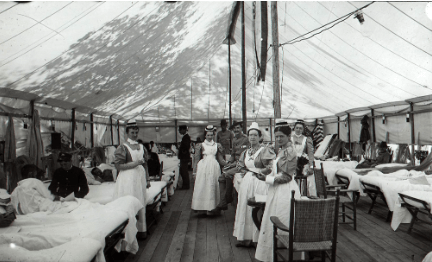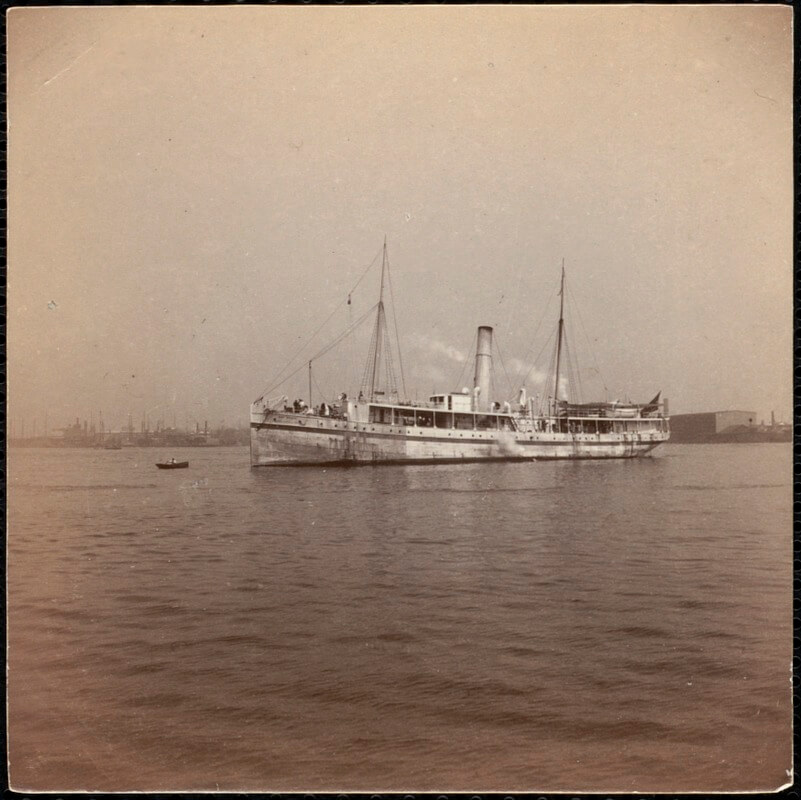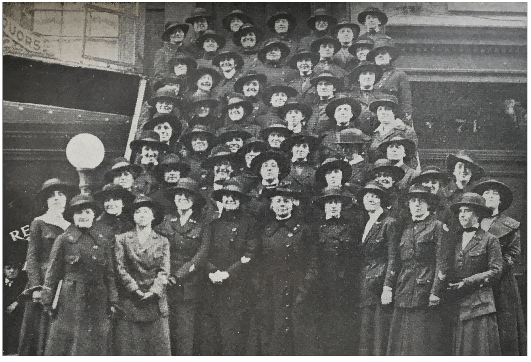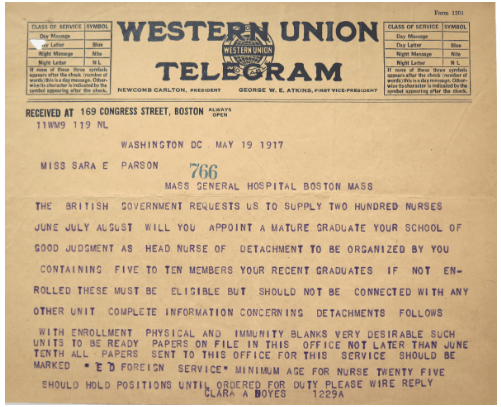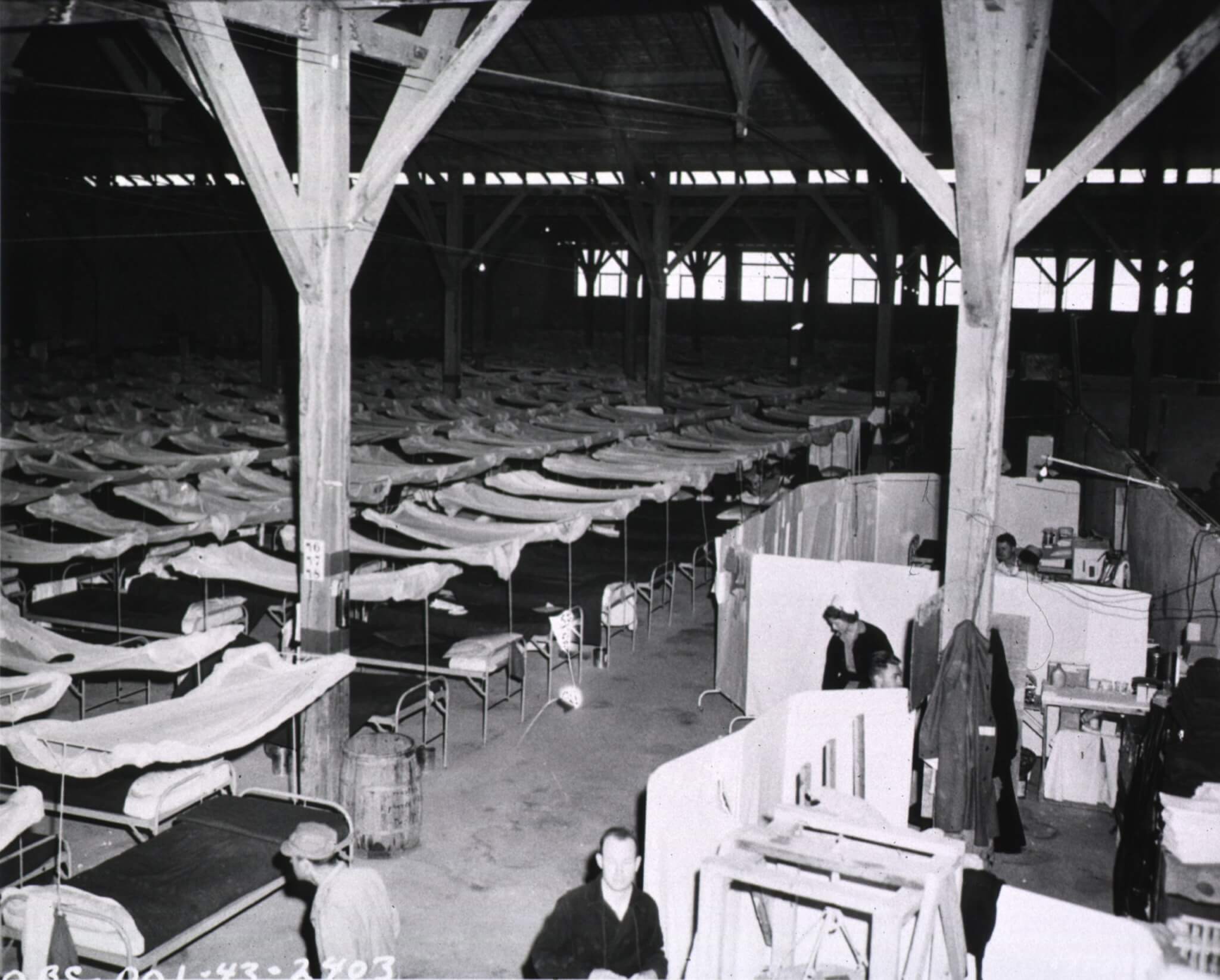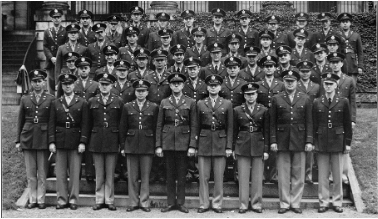MGH's Service During Wartime
Since its opening in 1821, the Massachusetts General Hospital has had a long tradition of caring for West Enders, Bostonians, and other patients from across the globe. This tradition includes a history of its nurses and doctors putting their own lives at risk while serving military personnel during wartime.
From its early history, the Massachusetts General Hospital (MGH) has treated thousands of service people during wartime. MGH’s care for wounded troops began during the Civil War, when it treated a total of 483 soldiers at its own facilities. MGH nurses and doctors increasingly expanded their care to the military during the Spanish American War and both World Wars, even deploying to war zones themselves.
MGH cared for hundreds of wounded soldiers of the Spanish American War in both its hospital buildings and in “tent wards” erected on the Bulfinch Lawn. Many of these soldiers suffered from typhoid fever and malaria which they contracted in the tropical climate of Cuba and Puerto Rico. Most arrived via hospital ships, such as the Olivet which brought forty-eight soldiers to the MGH tent wards on August 23, 1898. During the conflict, a unit of MGH physicians and nurses served on another hospital ship, the Bay State. Some MGH nurses volunteered for the Red Cross during the war and were sent to treat soldiers at Camp Chickamuga, Tennessee. Originally rejected by the Army because they “had never worked in the field before”‘ or “endured the hardships of field life”, the Army eventually put them to work as the situation there grew worse.
World War I witnessed the first deployment of MGH personnel to an overseas war zone. On July 9, 1917, 28 officers, 64 nurses, and 153 medical personnel left Boston on the ship “Aurania” destined for Talence, France. There they took over responsibility for L’hopital Complementaire No. 25, a French military hospital. Later renamed Base Hospital No. 6. after a rebuild and expansion, the hospital became known as the MGH Unit due to the number of MGH nurses and doctors based there. Sara E. Parsons, a graduate of the MGH School for Nursing, long time employee of MGH, and president of the Massachusetts State Nurse Association recruited nurses for the hospital. She enrolled nurses who met the following requirements: 25 years old, unmarried, and graduate of a 3 year accredited nurse training program.
The refurbished hospital officially reopened on August 21, 1917, with an initial capacity of 500 beds (later growing to 4,000 beds by the end of the war). Base Hospital 6 had 160 patients by October and 325 patients by December, 1917, an increase mainly due to winter cases of pneumonia, measles, and mumps. By late spring of 1918, the hospital treated more cases of combat wounds, including gassing. In 1918, the hospital managed an increasing amount of Spanish Flu cases which continued past the end of the war. The Army officially relieved Base Hospital 6 from duty on January 14, 1919 after treating a total of 24,122 patients.
During World War II, the Army reactivated Base Hospital No.6 as the 6th General Hospital on May 15, 1942. The office of the General Surgeon requested the assistance of MGH in staffing the unit with doctors, dentists and nurses. Within days nurses reported to MGH for their final physicals before going on active duty. Once staffed, the unit arrived at Camp Blanding, Florida where it remained for over eight months.
In January, the 6th General Hospital moved from Florida to Camp Kilmer, New Jersey before shipping overseas and serving in three different locations. Arriving first in Casablanca, Morocco, the hospital treated 18,000 patients until May of 1944. It then jumped to Rome, Italy where it treated 8,171 patients before being temporarily deactivated until the spring of 1945. On its third and final deployment, the 6th operated in Bologna, Italy from May to July of 1945, handling 2733 patients, most of them prisoners of war. On September 15, 1945, a few days after the end of the war, the 6th General Hospital was formally deactivated.
MGH’s wartime service continued to a lesser degree in Korea and Vietnam, but though its physical presence in war zones may have decreased, its pioneering work in medical research has had a lasting impact in the treatment of both combat and non-combat injuries and illnesses.
Article by Queenie Chen, edited by Bob Potenza
Sources: History of the Massachusetts General Hospital: June, 1871 to Dec., 1900 by Grace W. Myers; Quarterly Record 1914-1916 by MGH School of Nursing; Massachusetts General Hospital: Memorial & Historical Volume by Massachusetts General Hospital; Caring Headlines; Countway Library of Medicine; The Massachusetts General Hospital, 1935-1955 by Nathaniel W. Faxon; WW2 US Medical Research Centre


